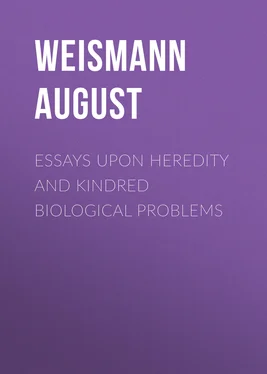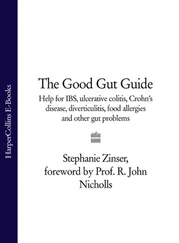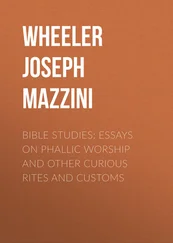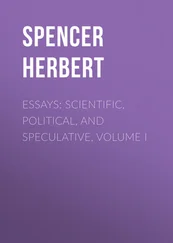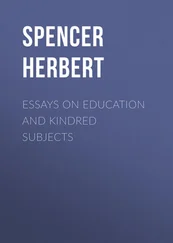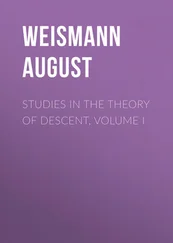August Weismann - Essays Upon Heredity and Kindred Biological Problems
Здесь есть возможность читать онлайн «August Weismann - Essays Upon Heredity and Kindred Biological Problems» — ознакомительный отрывок электронной книги совершенно бесплатно, а после прочтения отрывка купить полную версию. В некоторых случаях можно слушать аудио, скачать через торрент в формате fb2 и присутствует краткое содержание. Жанр: foreign_antique, Биология, на английском языке. Описание произведения, (предисловие) а так же отзывы посетителей доступны на портале библиотеки ЛибКат.
- Название:Essays Upon Heredity and Kindred Biological Problems
- Автор:
- Жанр:
- Год:неизвестен
- ISBN:нет данных
- Рейтинг книги:5 / 5. Голосов: 1
-
Избранное:Добавить в избранное
- Отзывы:
-
Ваша оценка:
- 100
- 1
- 2
- 3
- 4
- 5
Essays Upon Heredity and Kindred Biological Problems: краткое содержание, описание и аннотация
Предлагаем к чтению аннотацию, описание, краткое содержание или предисловие (зависит от того, что написал сам автор книги «Essays Upon Heredity and Kindred Biological Problems»). Если вы не нашли необходимую информацию о книге — напишите в комментариях, мы постараемся отыскать её.
Essays Upon Heredity and Kindred Biological Problems — читать онлайн ознакомительный отрывок
Ниже представлен текст книги, разбитый по страницам. Система сохранения места последней прочитанной страницы, позволяет с удобством читать онлайн бесплатно книгу «Essays Upon Heredity and Kindred Biological Problems», без необходимости каждый раз заново искать на чём Вы остановились. Поставьте закладку, и сможете в любой момент перейти на страницу, на которой закончили чтение.
Интервал:
Закладка:
It is unnecessary to go further into the details of these cases, or to consider whether and to what extent every class of the animal kingdom conforms to these principles. Thus to consider all or even most of the classes of the animal kingdom would be quite impossible at the present time, because our knowledge of the duration of life among animals is very incomplete. Biological problems have for a long time excited less interest than morphological ones. There is nothing or almost nothing to be found in existing zoological text books upon the duration of life in animals; and even monographs upon single classes, such as the Amphibia, reptiles, or even birds, contain very little on this subject. When we come to the lower animals, knowledge on this point is almost entirely wanting. I have not been able to find a single reference to the age in Echinodermata, and very little about that of worms, Crustacea, and Coelenterata [See Note 4]. The length of life in many molluscan species is very well known, because the age can be determined by markings on the shell [See Note 5]. But even in this group, any exact knowledge, such as would be available for our purpose, is still wanting concerning such necessary points as the degree of fertility, the relation to other animals, and many other factors.
Data the most exact in all respects are found among the insects [See Note 3], and to this class I will for a short time direct your special attention. We will first consider the duration of larval life. This varies very greatly, and chiefly depends upon the nature of the food, and the ease or difficulty with which it can be procured. The larvae of bees reach the pupal stage in five to six days; but it is well known that they are fed with substances of high nutritive value (honey and pollen), and that they require no great effort to obtain the food, which lies heaped up around them. The larval life in many Ichneumonidae is but little longer, being passed in a parasitic condition within other insects; abundance of accessible food is thus supplied by the tissues and juices of the host. Again, the larvae of the blow-fly become pupae in eight to ten days, although they move actively in boring their way under the skin and into the tissues of the dead animals upon which they live. The life of the leaf-eating caterpillars of butterflies and moths lasts for six weeks or longer, corresponding to the lower nutritive value of their food and the greater expenditure of muscular energy in obtaining it. Those caterpillars which live upon wood, such as Cossus ligniperda , have a larval life of two to three years, and the same is true of hymenopterous insects with similar habits, such as Sirex .
Furthermore, predaceous larvae require a long period for attaining their full size, for they can only obtain their prey at rare intervals and by the expenditure of considerable energy. Thus among the dragon-flies larval life lasts for a year, and among many may-flies even two or three years.
All these results can be easily understood from well-known physiological principles, and they indicate that the length of larval life is very elastic, and can be extended as circumstances demand; for otherwise carnivorous and wood-eating larvae could not have survived in the phyletic development of insects. Now it would be a great mistake to suppose that there is any reciprocal relation between duration of life in the larva and in the mature insect, or imago; or, to put it differently, to suppose that the total duration of life is the same in insects of the same size and activity, so that the time which is spent in the larval state is, as it were, deducted from the life of the imago, and vice versa . That this cannot be the case is shown by the fact already alluded to, that among bees and ants larval life is of the same length in males and females, while there is a difference of some years between the lengths of their lives as imagos.
The life of the imago is generally very short, and not only ends with the close of the period of reproduction, as was mentioned above, but this latter period is also itself extremely short [See Note 3].
The larva of the cockchafer devours the roots of plants for a period of four years, but the mature insect with its more complex structure endures for a comparatively short time; for the beetle itself dies in about a month after completing its metamorphosis. And this is by no means an extreme case. Most butterflies have an even shorter life, and among the moths there are many species (as in the Psychidae ) which only live for a few days, while others again, which reproduce by the parthenogenetic method, only live for twenty-four hours. The shortest life is found in the imagos of certain may-flies, which only live four to five hours. They emerge from the pupa-case towards the evening, and as soon as their wings have hardened, they begin to fly, and pair with one another. Then they hover over the water; their eggs are extruded all at once, and death follows almost immediately.
The short life of the imago in insects is easily explained by the principles set forth above. Insects belong to the number of those animals which, even in their mature state, are very liable to be destroyed by others which are dependent upon them for food; but they are at the same time among the most fertile of animals, and often produce an astonishing number of eggs in a very short time. And no better arrangement for the maintenance of the species under such circumstances can be imagined than that supplied by diminishing the duration of life, and simultaneously increasing the rapidity of reproduction.
This general tendency is developed to very different degrees according to conditions peculiar to each species. The shortening of the period of reproduction, and the duration of life to the greatest extent which is possible, depends upon a number of co-operating circumstances, which it is impossible to enumerate completely. Even the manner in which the eggs are laid may have an important effect. If the larva of the may-fly lived upon some rare and widely distributed food-plant instead of at the bottom of streams, the imagos would be compelled to live longer, for they would be obliged—like many moths and butterflies—to lay their eggs singly or in small clusters, over a large area. This would require both time and strength, and they could not retain the rudimentary mouth which they now possess, for they would have to feed in order to acquire sufficient strength for long flights; and—whether they were carnivorous like dragon-flies, or honey-eating like butterflies—their feeding would itself cause a further expenditure of both time and strength, which would necessitate a still further increase in the duration of life. And as a matter of fact we find that dragon-flies and swift-flying hawk-moths often live for six or eight weeks and sometimes longer.
We must also remember that in many species the eggs are not mature immediately after the close of the pupal stage, but that they only gradually ripen during the life of the imago, and frequently, as in many beetles and butterflies, do not ripen simultaneously, but only a certain number at a time. This depends, first, upon the amount of reserve nutriment accumulated in the body of the insect during larval life; secondly, upon various but entirely different circumstances, such as the power of flight. Insects which fly swiftly and are continually on the wing, like hawk-moths and dragon-flies, cannot be burdened with a very large number of ripe eggs. In these cases the gradual ripening of the eggs becomes necessary, and involves an increase in the duration of life. In Lepidoptera, we see how the power of flight diminishes step by step as soon as other circumstances permit, and simultaneously how the eggs ripen more and more rapidly, while the length of life becomes shorter, until a minimum is reached. Only two stages in the process of transformation can be mentioned here.
Читать дальшеИнтервал:
Закладка:
Похожие книги на «Essays Upon Heredity and Kindred Biological Problems»
Представляем Вашему вниманию похожие книги на «Essays Upon Heredity and Kindred Biological Problems» списком для выбора. Мы отобрали схожую по названию и смыслу литературу в надежде предоставить читателям больше вариантов отыскать новые, интересные, ещё непрочитанные произведения.
Обсуждение, отзывы о книге «Essays Upon Heredity and Kindred Biological Problems» и просто собственные мнения читателей. Оставьте ваши комментарии, напишите, что Вы думаете о произведении, его смысле или главных героях. Укажите что конкретно понравилось, а что нет, и почему Вы так считаете.
